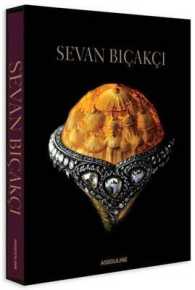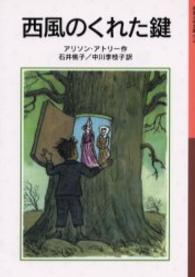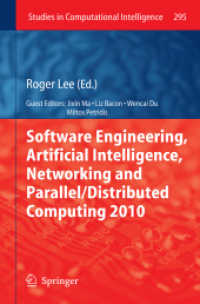基本説明
The editors' introductory and concluding chapters offer a synthesis of current CLIL research as well as a critical discussion of unresolved issues relating both to theoretical concerns and research practice. The individual contributions by authors from a range of European contexts report on current empirical research in this dynamic field.
Full Description
This volume explores a highly topical issue in second and foreign language education: the spreading practice in mainstream education to teach content subjects through a foreign language. CLIL has been enthusiastically embraced as a language enrichment measure in many contexts and finally research can offer principled insights into its dynamics and potentials. The editors' introductory and concluding chapters offer a synthesis of current CLIL research as well as a critical discussion of unresolved issues relating both to theoretical concerns and research practice. The individual contributions by authors from a range of European contexts report on current empirical research in this dynamic field. The focus of these chapters ranges from theoretical to empirical, from learning outcomes to classroom talk, examining both the written and spoken mode across secondary and tertiary educational contexts. This volume is a valuable resource not only for researchers and teachers but also for policy makers.
Contents
1. Acknowledgements; 2. Preface; 3. Introduction; 4. Charting policies, premises and research on content and language integrated learning (by Dalton-Puffer, Christiane); 5. Part I. General and theoretical issues; 6. On the natural emergence of language structures in CLIL: Towards a theory of European educational bilingualism (by Lorenzo, Francisco); 7. The pragmatics of L2 in CLIL (by Maillat, Didier); 8. Part II. CLIL at the secondary level; 9. A cross-sectional analysis of oral narratives by children with CLIL and non-CLIL instruction (by Huttner, Julia); 10. Using a genre-based approach to integrating content and language in CLIL: The example of secondary history (by Morton, Tom); 11. Effects of CLIL on a teacher's classroom language use (by Nikula, Tarja); 12. Writing and speaking in the history class: A comparative analysis of CLIL and first language contexts (by Garcia, Ana Llinares); 13. Language as a meaning making resource in learning and teaching content: Analysing historical writing in content and language integrated learning (by Jarvinen, Heini-Marja); 14. The CLIL differential: Comparing the writing of CLIL and non-CLIL students in higher colleges of technology (by Jexenflicker, Silvia); 15. Written production and CLIL: An empiricial study (by Ruiz de Zarobe, Yolanda); 16. Part III. CLIL at the tertiary level; 17. Metadiscursive devices in university lectures: A contrastive analysis of L1 and L2 teacher performance (by Dafouz, Emma); 18. Language Matters: Assessing lecture comprehension in Norwegian English-medium higher education (by Hellekjaer, Glenn Ole); 19. CLIL in an English as a lingua franca (ELF) classroom: On explaining terms and expressions interactively (by Smit, Ute); 20. Language use and language learning in CLIL: Current findings and contentious issues (by Dalton-Puffer, Christiane); 21. Subject index








